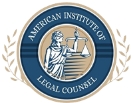Workers’ compensation provides essential benefits to employees injured on the job, but the system’s exclusive remedy rule usually prevents workers from suing their employers for negligence. However, many employees don’t realize they may have third-party personal injury claims against others whose carelessness caused their workplace injuries. Speaking with an experienced workers compensation lawyer near me can help you determine whether you qualify for both workers’ comp benefits and additional compensation from a negligent third party.
By knowing about third-party liability options, injured workers can get full compensation instead of just the limited benefits that workers’ compensation provides. Workers’ compensation pays for medical bills and some of your lost wages, but third-party lawsuits can pay for pain and suffering, all of your lost wages, and punitive damages that workers’ compensation doesn’t cover.
Since 2011, ODG Law Group has been filing and pursuing third-party claims for injured workers. We do this by combining workers’ compensation benefits with personal injury recoveries from careless third parties all over Los Angeles County and beyond to get the most money possible.
What the Exclusive Remedy Rule Means
California Labor Code Section 3602 says that workers’ compensation is the only way for employees to get money for injuries that happen at work. This means that in most cases, employees can’t sue their employers for injuries that happen at work.
Why You Can’t Usually Sue Your Boss
The exclusive remedy doctrine protects employers from personal injury lawsuits in exchange for providing workers’ compensation coverage, even if the employer is at fault. This deal makes sure that injured workers get benefits without having to prove negligence, and it also protects employers from having to pay for everything.
There are a few exceptions to employer immunity for serious and willful misconduct, but in these cases, it must be shown that the employer knew the risks would likely lead to serious injury and chose to ignore them. Standard negligence doesn’t get around exclusive remedy protection.
The Workers’ Compensation System’s Benefits
No-fault coverage means that workers who are hurt get benefits no matter who caused the accidents. Workers don’t have to show that their employer was careless in order to get medical care and disability payments.
Compared to personal injury lawsuits, benefits start much faster, usually within weeks instead of months or years. During recovery, workers’ compensation pays for medical care and replaces lost wages right away.
Restrictions on Workers’ Compensation Benefits
Two-thirds of the average weekly wage for partial wage replacement leaves big gaps in income. During recovery periods, workers’ compensation does not cover the full amount of salary.
In workers’ compensation cases, there is no money for pain and suffering. The system only gives people money, not emotional support or a better quality of life.
Workers’ compensation does not cover punitive damages. The system cannot punish behavior that puts workers in danger by ignoring safety rules.
Common Third-Party Defendants in Cases of Workplace Injuries
There may be more than just employers who are responsible for workplace injuries. This opens up the possibility of getting more money through personal injury lawsuits.
Companies that make products and equipment
Manufacturers can be held strictly liable for injuries caused by faulty machinery. Forklifts, saws, presses, and other industrial machinery that are used at work and have design or manufacturing flaws can be used in product liability lawsuits.
If a power tool breaks because of bad guards, not enough safety features, or a manufacturing flaw, the tool maker can be sued. Construction workers who are hurt by broken tools can sue the companies that made them while still getting workers’ compensation.
Property Owners and General Contractors
Injuries on construction sites often involve more than one person. General contractors are responsible for the safety of subcontractor employees who work on their projects.
When property owners keep their properties in dangerous conditions that hurt workers who are doing work on them, they can be sued for premises liability. If a building owner is careless and causes injuries to a contractor, they can be held responsible for more than just workers’ compensation.
Drivers of vehicles and transportation companies
When third-party drivers are involved in work-related car accidents, they can file personal injury claims. Delivery drivers, salespeople, and other workers who are hurt by careless drivers can sue the drivers while still getting workers’ compensation.
Trucking companies are responsible for accidents that happen at work when their drivers are driving for other businesses. If a worker is hurt by a delivery truck, semi-truck, or other commercial vehicle on the job or on the road, they can file a third-party claim.
Subcontractors and employees of different companies
Multi-employer worksites make it possible for people to sue employees of different companies. Employees who are hurt because of another company’s workers’ carelessness can sue those workers and their employers.
If a subcontractor’s carelessness hurts another contractor’s employees, that contractor can file a third-party claim. These cross-employer liability situations happen a lot on construction sites where there are many subcontractors.
Companies that do maintenance and repairs
If a service provider doesn’t keep up with their work, they can be sued for damages. When elevator maintenance companies, HVAC contractors, and other service providers are careless and hurt workers, they are responsible for the injuries.
If a repair company doesn’t fix something right and it causes an accident later, they are responsible. If workers get hurt because of machinery that was not fixed properly, they can sue the repair contractors who did the bad work.
Different kinds of third-party claims that can be made
Different legal theories back third-party claims based on how the actions or products of negligent parties led to injuries at work.
Claims for Product Liability
If a product is defective, strict liability means that you don’t have to prove that the manufacturer was careless. Workers must prove that the products were faulty and caused injuries when used in a way that was reasonably expected.
Design flaws make whole lines of products unreasonably unsafe. When safer options were available, manufacturers whose design choices led to injuries that could have been avoided are responsible.
When production mistakes make products dangerous, manufacturing defects that affect individual items back up claims. Even if thousands of units are made correctly, one defective unit can still make the manufacturer liable.
Not warning people about the dangers of a product is a marketing flaw. Liability claims are supported by warnings or instructions that are not clear enough to let users know about risks.
Claims for Premises Liability
Property owners who keep their property in dangerous conditions are responsible for injuries to workers. Premises claims are based on things like uneven surfaces, poor lighting, structural flaws, or other dangers.
If property owners or general contractors don’t keep construction sites safe, subcontractor employees can sue. People who are in charge of worksites have a duty to keep all workers safe.
Claims for Motor Vehicle Negligence
When someone gets hurt in a traffic accident while on the job, they can sue the driver who caused it. People who get hurt while driving for work, making deliveries, or going between job sites can sue drivers who are careless.
If a truck, bus, or delivery truck crashes with a commercial vehicle, the drivers, trucking companies, and vehicle owners who were careless and caused injuries at work may be liable.
Claims of Professional Negligence
If an engineer or architect makes a mistake in construction plans that puts people in danger, that can lead to a claim of professional negligence. Design professionals who make mistakes that hurt construction workers are responsible for those injuries.
When safety consultants hired to make sure the workplace is safe don’t find or fix hazards that hurt workers, they may be liable.
Putting together workers’ compensation and third-party claims
To get the most out of dual recovery systems while still following the law about workers’ compensation liens and credit rules, they need to be carefully coordinated.
How Benefits Work Together
Workers’ compensation and third-party lawsuits go on separately because they have different claim processes. Workers get workers’ comp benefits right away while they try to get bigger amounts from third parties.
When you combine your compensation, you can get more money back. Workers’ compensation gives quick partial benefits, but third-party claims give full compensation, including pain and suffering, which workers’ comp doesn’t cover.
Liens for Workers’ Compensation
Reimbursement obligations mean that you have to pay back workers’ compensation carriers from money you get from other people. Insurance companies that paid for medical care and disability benefits keep liens on settlements or verdicts from other parties.
The lien amounts are the same as the benefits paid, but they can be lowered through negotiation. California law gives formulas for figuring out the right amount of lien reductions based on attorney fees and costs for getting money back from third parties.
Credit against settlements means that third-party recoveries don’t pay out the same amount twice. After paying off workers’ compensation liens, workers get the net amounts.
Costs and fees for lawyers
Contingency fee agreements for claims made by third parties are different from those for workers’ compensation cases. Personal injury lawyers usually take 33–40% of the money they win, while workers’ compensation lawyers get fees that have been approved by the court.
You need to plan your finances carefully when you have to pay for investigations, expert witnesses, and court costs in third-party cases. Lawyers who pay costs up front get that money back from settlements before giving out the rest.
Showing that a third party is responsible
To win a third-party lawsuit, you need more evidence than you do for workers’ compensation. You need to show that the other party was careless or that the product was defective, not just that you were hurt at work.
Looking into things and gathering evidence
Photographs, measurements, and the preservation of physical evidence at the scene of an accident show how third-party negligence caused injuries. A thorough investigation right after an accident gets important evidence.
Witness testimony from coworkers and other people who were there when the accident happened helps to prove who was at fault. When third parties disagree about who is responsible, independent witnesses can be very helpful.
Engineers, safety experts, or doctors can explain how injuries happened because of third-party negligence or faulty products. In complicated cases, expert testimony is needed to prove causation.
Getting Information from Other People
In personal injury lawsuits, discovery processes let you get documents, depositions, and other evidence from the people who are being sued. Third-party litigation gives you tools for investigation that you can’t use in workers’ compensation cases.
To identify the defendant, you need to find all the people who might be responsible. A thorough investigation shows that there are negligent parties other than the obvious defendants, such as equipment manufacturers, property owners, and others.
Getting past defense strategies
Comparative fault arguments try to make injured workers responsible for accidents. Third-party defendants say that workers hurt themselves to lower their own liability.
Assumption of risk defenses say that workers knew about the risks and chose to take them anyway. These defenses usually don’t work when someone else’s carelessness made things too dangerous.
How to File Third-Party Claims Along with Workers’ Comp: A Step-by-Step Guide
To get the most money from combined recovery systems, workers’ compensation and personal injury claims must be strategically coordinated.
1. Report Injuries to Workers’ Compensation
California law says you have to file workers’ compensation claims right away. While looking into third-party liability, you can get medical care and temporary disability benefits through workers’ comp.
2. Keep all proof from accident scenes safe.
Take detailed notes about the accident, including pictures, information about the equipment, contact information for witnesses, and physical evidence. Claims for workers’ compensation don’t need as much proof as lawsuits against third parties.
3. 3. Find Possible Third-Party Defendants
Find out who else besides your boss may have caused your injuries. Think about the people who made the equipment, the property owners, the drivers of the vehicles, the contractors, and the service providers whose carelessness caused harm.
4. Talk to lawyers who have worked in both areas.
Look for lawyers who work on both workers’ compensation and personal injury cases. Coordinated representation makes sure that liens are handled correctly and that total compensation is as high as possible.
5. File Third-Party Claims Before the Deadline
In California, you have two years to file a personal injury lawsuit. If you miss a deadline, you can’t get money back from a third party, no matter how strong your case is.
6. Organize the paperwork for medical treatment
Make sure that medical records fully explain the reasons for the injury, the need for treatment, and the expected outcome. Full medical records are helpful for both workers’ compensation and third-party claims.
7. Tell the Workers’ Compensation Carrier
As needed, let workers’ comp insurance know about claims from third parties. Carriers that file liens need to be told about possible recoveries that they will try to get paid back for.
8. Get as much money back from third parties as you can.
Aggressive litigation against third parties gets the most money. Higher settlements with third parties help workers even after they pay off their workers’ compensation liens.
9. Talk about lowering workers’ compensation liens
Work with lawyers to lower liens by negotiating or going to court. California law has lien reduction formulas that help injured workers in third-party cases.
10. Strategically plan settlements for structure
Set the timing of workers’ compensation and third-party settlements so that taxes are minimized and benefits are kept. Strategic settlement structuring gets you the most money back.
Getting the most out of your total recovery
Combining workers’ compensation benefits with third-party recoveries through strategic claim management gives you a lot more money than just workers’ comp.
Third-Party Claims: Financial Benefits
Personal injury claims for full wage loss compensation get back all of the lost income, while workers’ compensation only covers two-thirds of it. Third-party recoveries don’t include wage caps that limit workers’ comp benefits.
Pain and suffering damages give you a lot more money than workers’ compensation does. Serious injuries that warrant substantial pain and suffering awards significantly augment total recovery.
Third-party claims pay more for future damages, such as the costs of medical care for the rest of your life and the loss of your ability to earn money permanently. Personal injury damages cover all future losses completely.
Possible Punitive Damages
Punitive damage awards may be appropriate for reckless behavior by third parties. Manufacturers who knowingly sell faulty equipment or property owners who knowingly ignore safety rules can be sued for punitive damages.
Punitive awards that make people think twice about doing something dangerous are a form of punishment. These damages are meant to stop future wrongdoing, not just pay for the injuries of the workers.
Questions and Answers About Third-Party Claims
Q: If my boss was really careless, can I sue them?
A: No, workers’ compensation is usually the only way to get money from an employer, except in very rare cases of serious and willful misconduct. But you can still go after third parties whose carelessness led to your injuries.
Q: Will suing someone else hurt my workers’ compensation benefits?
A: No, third-party claims and workers’ compensation go on without each other. You can still get workers’ compensation benefits while you look for money from a third party. But workers’ comp companies will put liens on settlements with third parties.
Q: After workers’ compensation liens, how much of my third-party settlement will I keep?
A: The net recovery depends on the total amount of the settlement and the workers’ comp benefits that were paid. California law has formulas for lowering liens. After paying off liens, workers usually keep a lot of the money they get from third parties.
Q: What if the other person says I caused the accident?
A: California’s comparative negligence law lets you get money even if you are partly to blame. Your fault percentage will lower your compensation, but you can still get a lot of money unless you are 100% at fault.
Q: Is it possible for me to sue coworkers who hurt me?
A: No, coworkers who work for the same company usually don’t have to worry about workers’ compensation. But if employees of different companies working at your job site hurt you because they were careless, you can sue them.
Q: Do I need different lawyers for workers’ comp and third-party claims?
A: Not always. Many lawyers do both, which means they can represent you in a coordinated way. But make sure your lawyer knows how to handle both types of cases so you can get the most money back and handle workers’ compensation liens correctly.
Q: What if I’ve already settled my workers’ comp case?
A: If the statute of limitations hasn’t run out, you can still file third-party claims. But settling workers’ comp claims could change the amount of the lien. Talk to lawyers before settling either claim to get the best advice.
Resources for Getting Information About Third-Party Claims
To learn more about coordinating third-party liability and workers’ compensation, go to:
California Division of Workers’ Compensation: Information about liens and benefits
California State Bar: Find a lawyer and get legal help
California Courts: How to file a personal injury lawsuit
Get the most money possible by managing your claim wisely.
Third-party claims can get you a lot more money than just workers’ compensation. For example, you can get full wage loss, pain and suffering, and punitive damages that you can’t get through workers’ comp. If someone else’s carelessness caused your injuries, you shouldn’t settle for limited workers’ compensation benefits. They should be fully responsible.
Since 2011, ODG Law Group has successfully handled workers’ compensation and third-party personal injury claims for injured workers all over Los Angeles County. We find all the people who might be responsible, thoroughly look into accidents to prove that a third party was negligent, and fight hard for the most money possible while carefully handling workers’ compensation liens. Our knowledge of both workers’ compensation and personal injury law makes sure you get the best total recovery.
If you got hurt at work and think that someone other than your boss may have caused the accident, call ODG Law Group at (818) 975-3080 for a free consultation. Our skilled staff can help you in English, Spanish, and Armenian. We will look at your case, find possible third-party defendants, and come up with ways to get you the most money possible by combining your workers’ compensation and personal injury recoveries.




